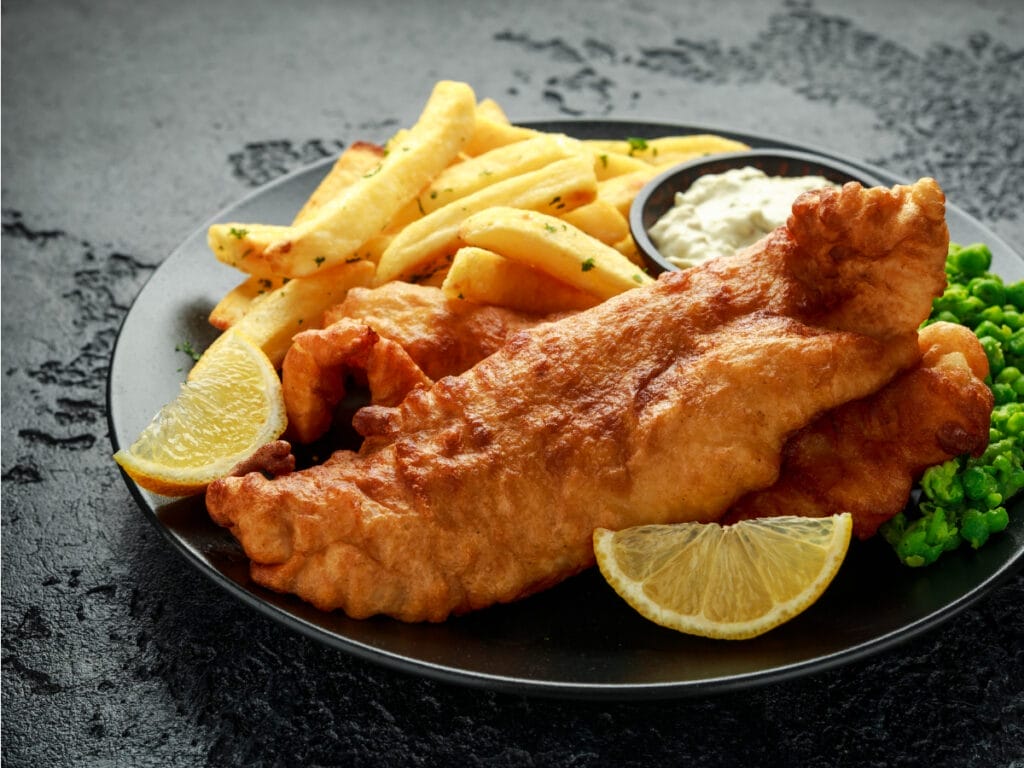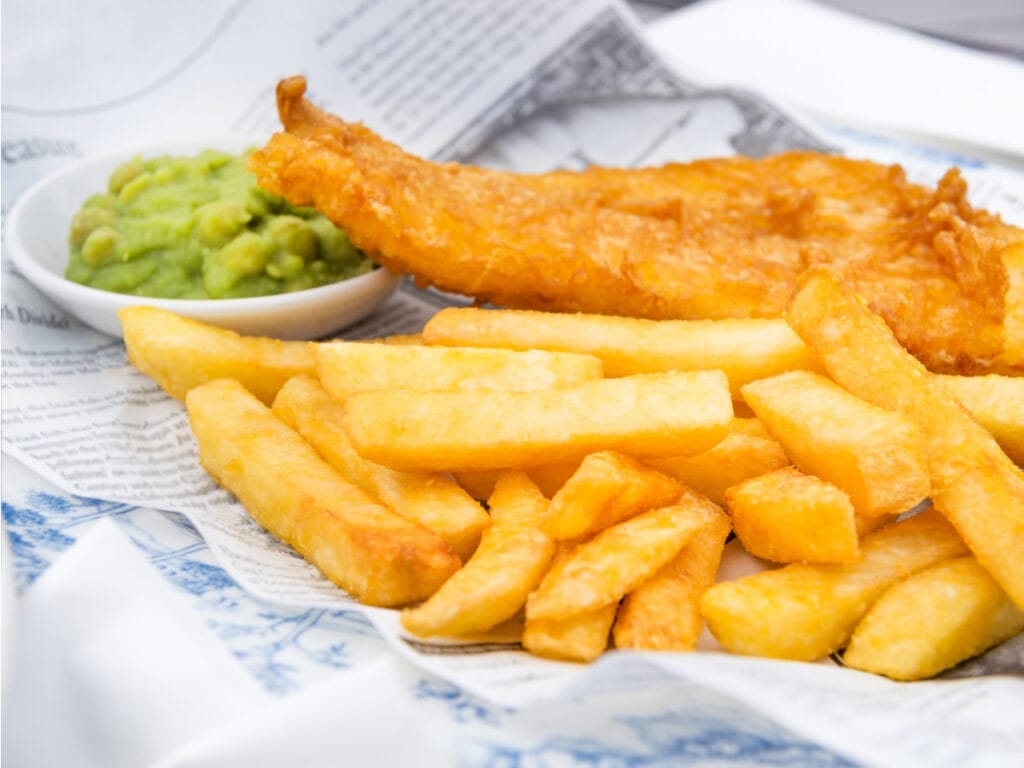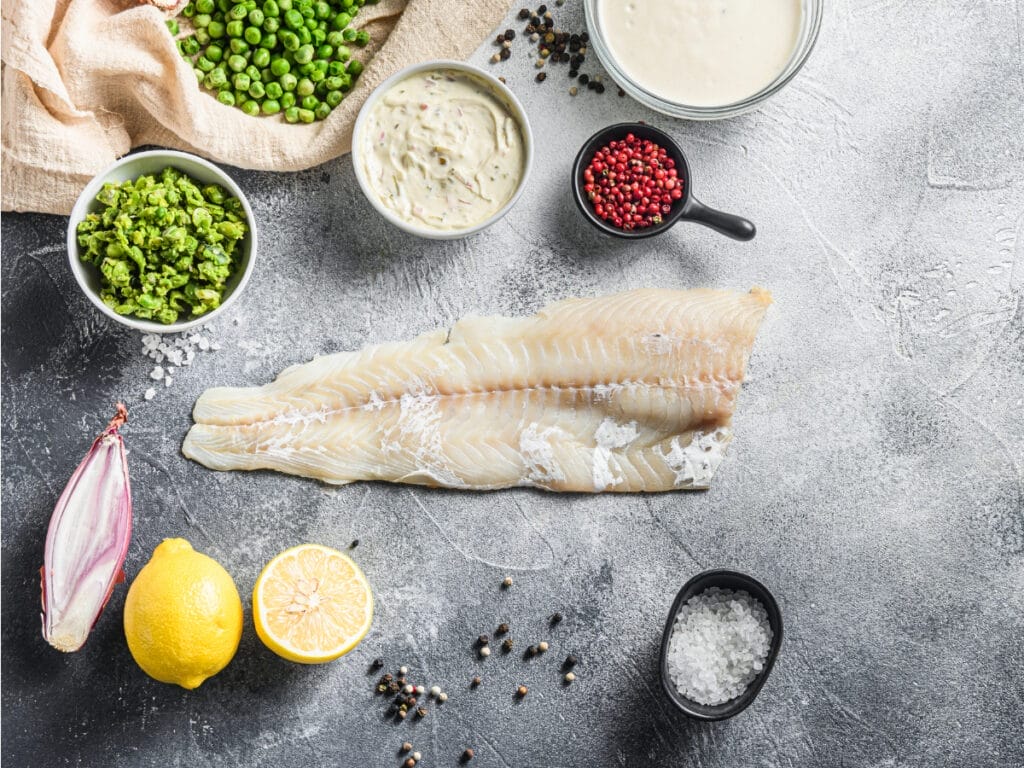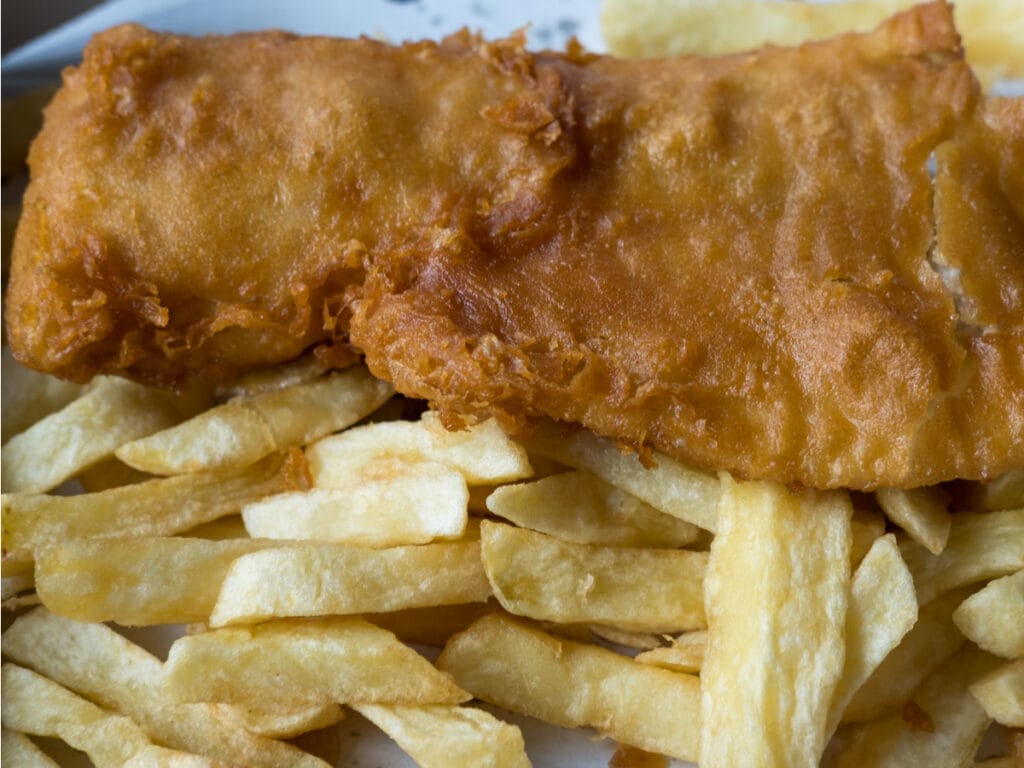This post contains affiliate links for which I may make a small commission to help keep the site running. You will not be charged extra for these items had you not clicked the links. Thank you for your help to keep the site running!
Fish and chips, the UK’s most iconic dish (arguably!).
In this article, we’ll dive deep into the history of fish and chips in England, including who invented fish and chips, how fish and chips changed in the 1980s and what in the world fish and chips have to do with WWII!
As an American who moved to England in 2012, I’ve spent a lot of time wondering about these fish and chips facts every time I dig into my cod and chips from the local “chippie” (a shortened name for a fish and chips shop).

How Much Does Britain Love Fish and Chips?
The UK loves fish and chips.
On average, Britons spend over £1 billion on fish and chips every single year, and it’s 2-4 times more popular than the next most popular time of takeaway, Indian.
This equates to over 380 million fish and chip meals every year, and there are currently over 10,000 fish and chip shops in the UK.
It’s very popular to have a “local” fish and chips shop, or many, depending on the area – unless you’re very rural, most people won’t have to drive too far to find one.

What are Fish and Chips?
So let’s get clear on what fish and chips are, in case you’re not from the UK – there are two main types of fish used in fish and chips, cod, and haddock.
Cod is still the most popular, with haddock second, but then there are other types of white fish you can use including plaice, rock, and skate.
The cuts of fish, usually about the length of a dinner plate but can vary, are covered in batter made from water, flour, and a little baking soda, and fried in vegetable oils, though a minority of fish and chip shops in the North of England and Scotland and the majority of those in NI still use beef dripping which is a bit more old school.
The chips, or what Americans would call fries, are fried potatoes – the thick cut kind, not a skinny fry.
Traditionally, salt and vinegar are sprinkled over the fish and chips through most of the UK, though in some places in Scotland, a brown sauce can be used.
Tartar sauce is commonly used. Mushy peas, which are…well, peas that are mushy and look like this, are also a popular side dish.
Fish and Chips in UK Fun Facts

Ever wondered about the world’s largest portion of fish and chips or the record number of fish and chips portions sold in one day?
Of course you haven’t!
But I’m going to tell you some anyway.
The world record for the number of fish and chips sold in one day was by Marini’s in Glasgow, Scotland, at 12,406 portions!
Another fun fact is that the world’s largest portion of fish and chips was made by Fish & Chips – great name, in London in July of 2012, weighting over 47 kg.
Birmingham beats every other UK city for the number of people who say they add curry sauce to their fish and chips, while Belfast is top for splashing on vinegar and Manchester for adding mushy peas.
Cardiff ranks the top for the most amount of salt added, and Edinburgh prefers to eat their fish and chips on the couch in front of the TV, while Glaswegians like to eat them on the way home from the pub.
British Fish and Chips History

Let’s talk about the history of fish and chips and origins of fish and chips in Britain.
While fish and chips are now associated with the UK, they’re not actually British in origin in the original sense.
The tradition of frying white fish in flour came to the UK when Portuguese Jews fled to Britain in the late 15th and early 16th century.
The original method was more to preserve the fish so it could be eaten the next day, but the Brits got a taste of it and started enjoying this delicacy and calling it “fish cooked in the Jewish manner.”
The first popular literary reference to fish and chips was by our friend Charles Dickens, who mentioned a “fried fish warehouse” in Oliver Twist in 1838.
The first fish and chips shop to open was one in London by a Jewish immigrant named Joseph Malin in 1860, shortly followed by a man in the North of England, John Lees, who had a “chipped potato restaurant” in 1863 and also sold fish and chips.
This time period is important because it’s leading up to the industrial revolution, when steam trains and ice packers meant that fish becomes more easily transported and cheaper and soon fish and chip shops were opening up across the country, primarily as a working class meal.
In the 1920s, there were over 35,000 fish and chips shops around the UK!
World War II and Fish and Chips

So what happens during World War II?
During the war, the British public had to give up a lot of food options during the ration system – things like eggs, sugar, jam, butter.
But the government believed that access to fish and chips without rations would keep up morale on the homefront, so they made an effort to ensure a continuous supply of fish and potatoes despite disruptions caused by attacks on the supply chain.
This shows just how important this dish was to the identity of Britain and to getting through hard times.
How did fish and chips in England change in the 1980s?

The latest change to fish and chips happened in the 80s when a new food hygiene rule banned the use of real newspaper for wrapping fish and chips.
Obviously there was a chance the ink would rub off onto the meal and probably you shouldn’t be consuming newspaper ink as a general rule, I don’t know, just a guess, so nowadays you’ll usually just have some food safe paper wrapping or a layer of food safe wrapping then covered by newspaper, with the newspaper not actually touching the food.
